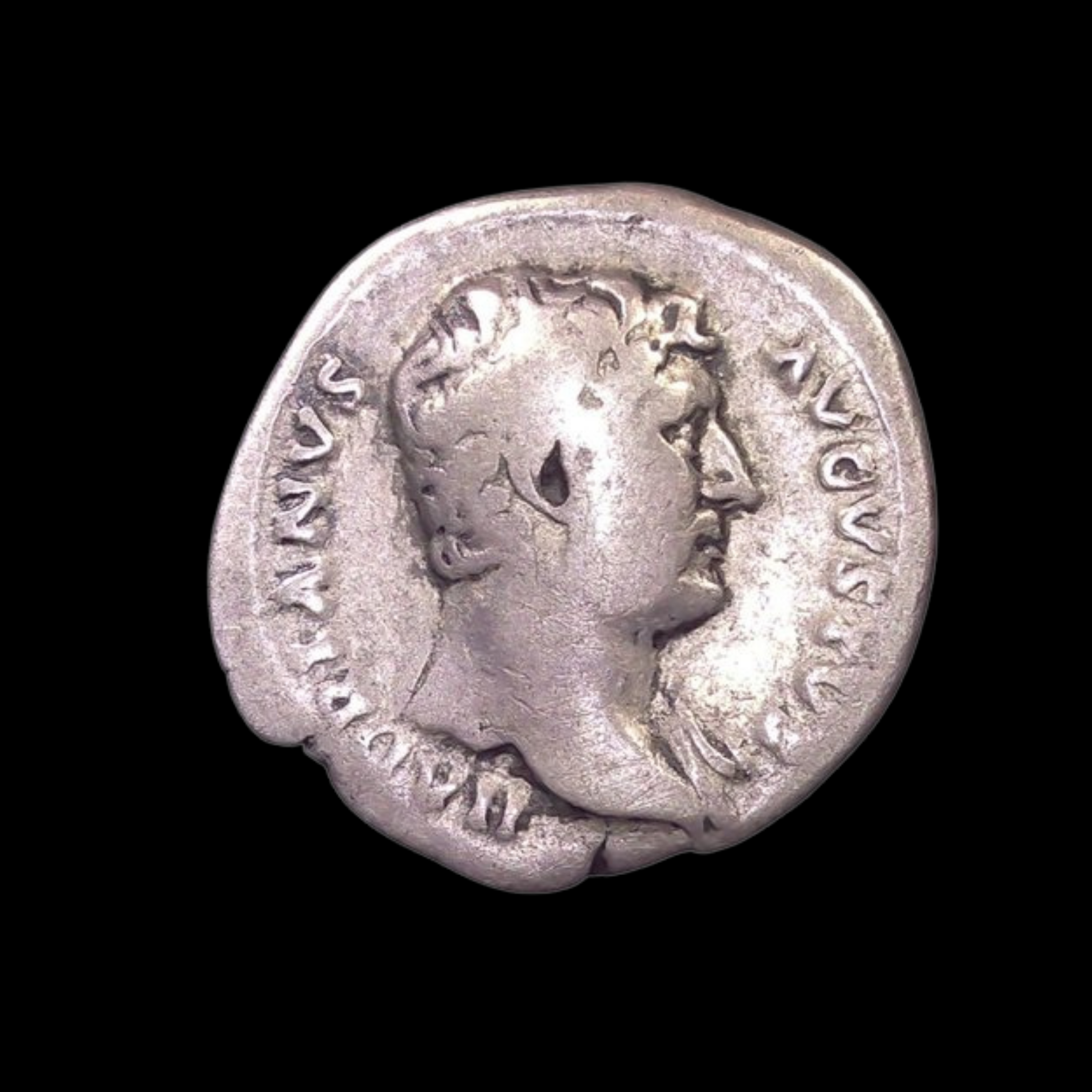 Image 1 of 4
Image 1 of 4

 Image 2 of 4
Image 2 of 4

 Image 3 of 4
Image 3 of 4

 Image 4 of 4
Image 4 of 4

Roman AE Of Constantine II (Epfig Hoard) (about 1,685-1,710 years ago)
This bronze coin from the Epfig Hoard was minted during the reign of Constantine II, eldest son of Constantine the Great. As part of a famous coin hoard discovered in eastern France, this piece represents the dynastic succession that followed Constantine the Great's revolutionary reign.
Coin Description:
Front side: Profile portrait of the young Constantine II, likely wearing a laurel wreath or diadem, with his name and titles in Latin around the edge
Back side: Probably features military standards, victory imagery, or other symbolic representations common on imperial coinage of this period
Technical Details:
Bronze composition (copper alloy)
AE denomination (referring to bronze coinage)
NGC certified (Numismatic Guaranty Corporation)
Minted between 316-340 CE
Part of the Epfig Hoard find
Condition: Certified by NGC, specific grade not provided
Historical Significance: This coin reflects the complex dynastic politics following Constantine the Great's death in 337 CE. Constantine II, designated a Caesar (junior emperor) during childhood, received the western provinces when the empire was divided among Constantine's sons. His brief independent reign ended in 340 CE when he invaded his brother Constans' territory and was killed in battle near Aquileia (modern northeastern Italy), illustrating the persistent struggle for power among imperial heirs despite Constantine the Great's efforts to establish a stable succession.
This bronze coin from the Epfig Hoard was minted during the reign of Constantine II, eldest son of Constantine the Great. As part of a famous coin hoard discovered in eastern France, this piece represents the dynastic succession that followed Constantine the Great's revolutionary reign.
Coin Description:
Front side: Profile portrait of the young Constantine II, likely wearing a laurel wreath or diadem, with his name and titles in Latin around the edge
Back side: Probably features military standards, victory imagery, or other symbolic representations common on imperial coinage of this period
Technical Details:
Bronze composition (copper alloy)
AE denomination (referring to bronze coinage)
NGC certified (Numismatic Guaranty Corporation)
Minted between 316-340 CE
Part of the Epfig Hoard find
Condition: Certified by NGC, specific grade not provided
Historical Significance: This coin reflects the complex dynastic politics following Constantine the Great's death in 337 CE. Constantine II, designated a Caesar (junior emperor) during childhood, received the western provinces when the empire was divided among Constantine's sons. His brief independent reign ended in 340 CE when he invaded his brother Constans' territory and was killed in battle near Aquileia (modern northeastern Italy), illustrating the persistent struggle for power among imperial heirs despite Constantine the Great's efforts to establish a stable succession.
This bronze coin from the Epfig Hoard was minted during the reign of Constantine II, eldest son of Constantine the Great. As part of a famous coin hoard discovered in eastern France, this piece represents the dynastic succession that followed Constantine the Great's revolutionary reign.
Coin Description:
Front side: Profile portrait of the young Constantine II, likely wearing a laurel wreath or diadem, with his name and titles in Latin around the edge
Back side: Probably features military standards, victory imagery, or other symbolic representations common on imperial coinage of this period
Technical Details:
Bronze composition (copper alloy)
AE denomination (referring to bronze coinage)
NGC certified (Numismatic Guaranty Corporation)
Minted between 316-340 CE
Part of the Epfig Hoard find
Condition: Certified by NGC, specific grade not provided
Historical Significance: This coin reflects the complex dynastic politics following Constantine the Great's death in 337 CE. Constantine II, designated a Caesar (junior emperor) during childhood, received the western provinces when the empire was divided among Constantine's sons. His brief independent reign ended in 340 CE when he invaded his brother Constans' territory and was killed in battle near Aquileia (modern northeastern Italy), illustrating the persistent struggle for power among imperial heirs despite Constantine the Great's efforts to establish a stable succession.
Constantine II (Latin: Flavius Claudius Constantinus; 316–340) was Roman emperor from 337 to 340. The son of the emperor Constantine I, he was proclaimed caesar by his father shortly after his birth. He was associated with military victories over the Sarmatians, Alamanni and Goths during his career, for which he was granted a number of victory titles.[4] He held the consulship four times – in 320, 321, 324, and 329.
Constantine I had arranged for his sons to share power with their cousins Dalmatius and Hannibalianus, but this was not accepted by Constantine II and his brothers. As a result, Constantine II's brother Constantius II ordered the killings of numerous male relatives following Constantine I's death, including Dalmatius and Hannibalianus, thus eliminating any possible opponents to the succession of Constantine I's sons. Constantine II then ascended to the throne alongside his two younger brothers, ruling Gaul, Hispania, and Britain. However, his belief in his rights of primogeniture and attempts to exert them over his youngest brother Constans caused conflict, which ended with his death in a failed invasion of Italy in 340. Constans subsequently took control of Constantine's territories, with the latter being subjected to damnatio memoriae.

























